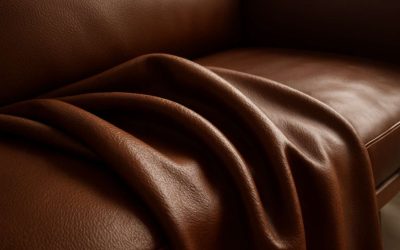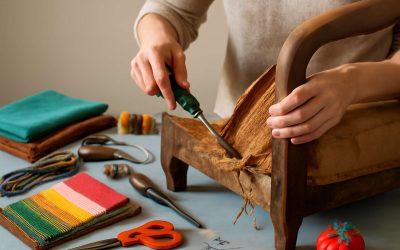Tools and Materials Needed for Reupholstering
Essential Tools
Embarking on the journey of how reupholster a dining chair is a delicate dance between artistry and precision. To create a masterpiece that endures, gathering the right tools and materials is paramount. Each tool acts as an extension of your craftsmanship, transforming raw fabric and foam into a regal throne.
A staple remover, a heavy-duty scissors, and a pneumatic upholstery gun are essential for stripping away the old and setting the stage anew. For the finishing touches, a foam cutter and upholstery needles will prove invaluable. The materials list should include durable upholstery fabric, high-density foam, and quality batting—elements that breathe new life into your chair’s character.
- Staple gun and staples
- Upholstery fabric of choice
- High-density foam padding
- Adhesive spray or contact cement
Equipped with these essentials, your quest to master how reupholster a dining chair becomes an inspiring voyage—where imagination and craftsmanship unite in perfect harmony.
Materials
When embarking on the journey of how reupholster a dining chair, choosing the right materials is as crucial as selecting the perfect fabric. The foundation of a stunning transformation lies in high-quality components that stand the test of time. Durable upholstery fabric, high-density foam, and soft batting are the vital ingredients that breathe new life into your treasured piece. These materials not only enhance comfort but also elevate the aesthetic appeal, turning a simple chair into a statement of style.
To achieve a flawless finish, consider the following key materials:
- Upholstery fabric of choice – luxurious, resilient, and suited to your décor
- High-density foam padding – for added support and comfort
- Adhesive spray or contact cement – ensuring secure adhesion of layers and fabric
Having these essentials at hand transforms the seemingly mundane task of reupholstering into an artful craft. The right combination of tools and materials makes the process not just achievable but truly rewarding, revealing how reupholster a dining chair can become a captivating project filled with creative potential.
Preparing the Dining Chair for Reupholstery
Removing the Old Fabric
In the quiet anticipation of renewal, the first step in how reupholster a dining chair begins with the delicate art of stripping away the old fabric—a layer of memories, stains, and time itself. As you peel back the worn tapestry, a tapestry of raw, weathered padding and springs emerges, whispering stories of countless meals and shared laughter. It’s here, amidst the remnants of fabric, that the true transformation begins.
Carefully, using a staple remover or screwdriver, loosen the tacked edges, revealing the underlying structure with reverent patience. The process is akin to unwrapping a gift—each pull revealing the potential for a new chapter. To ensure a seamless reupholstery process, it’s wise to document the sequence of attachments or even remove parts in an ordered fashion. This meticulous approach not only preserves the integrity of the chair but also guides your hand when attaching fresh fabric, making the entire journey both artistically satisfying and practically straightforward.
Assessing the Frame and Padding
In the dim glow of transformation, assessing the skeleton of your dining chair becomes an act of reverence. The frame, often unseen, bears the weight of countless gatherings, whispering stories through its silent cracks and creaks. Before you dive into how reupholster a dining chair, it’s vital to scrutinize its structure—any signs of warping, looseness, or broken joints could undermine your efforts. An unstable frame not only compromises comfort but threatens the longevity of your craftsmanship.
Next, turn your gaze inward to the padding—a crucial element that shapes the chair’s soul. Over time, foam or batting may sag or harden, losing their plush allure. Carefully peel back the layers, evaluating whether they can be rejuvenated or need replacing entirely. If the padding shows signs of wear, consider adding fresh cushioning to restore that inviting embrace. The key to a successful reupholstery lies in understanding the delicate balance between the chair’s structural integrity and the comfort it must provide.
Cleaning and Repair
Before diving into how reupholster a dining chair, it’s essential to give your furniture a thorough once-over. Think of this step as a spa day for your chair — it deserves a little TLC before the glamorous transformation begins! Start by cleaning the frame meticulously, removing any dust, grime, or lingering cobwebs. A clean surface ensures that new fabric and padding will adhere perfectly, preventing future sagging or peeling.
Next, inspect the legs and joints for stability. Loose screws or wobbly joints can sabotage your reupholstery efforts, turning your chic new chair into a wobble-worthy disaster. Tighten or replace any hardware as needed. For a smoother process, consider removing the existing fabric carefully, noting how it’s attached — staples, tacks, or glue. This preparation helps you identify potential pitfalls and ensures a flawless finish when you start how reupholster a dining chair from scratch.
Measuring and Cutting New Upholstery Fabric and Padding
Measuring the Seat and Backrest
Once you’ve removed the old fabric and assessed the frame, the next crucial step in how to reupholster a dining chair is measuring and cutting your new upholstery fabric and padding. Precision here ensures your finished piece looks polished rather than slapdash. Take a moment to carefully measure the seat and backrest—the foundation of comfort and style in any dining chair. Remember, a good measurement accounts for the thickness of your padding and fabric, which can add a surprising amount of bulk. It’s tempting to cut corners, but trust me, a little extra fabric goes a long way in avoiding those pesky wrinkles or loose edges.
For an efficient workflow, consider following this simple approach:
- Measure the width, length, and depth of the seat and backrest.
- Add an extra 2-3 centimeters for seam allowances and overlaps.
- Cut your padding slightly larger than your measurements to ensure full coverage.
By paying attention to these details, you’ll master the art of how reupholster a dining chair with finesse—transforming it from tired to trendy in no time flat!
Cutting the Foam and Fabric
Once the measurements are etched into your memory, the dance of cutting begins—an act of precision that transforms raw materials into a canvas of comfort and style. The process of how reupholster a dining chair hinges on careful calculation; the fabric and padding must be tailored with an artist’s finesse. It’s tempting to rush, to cut corners, but remember—every millimeter counts in achieving that seamless, polished finish that elevates your space from mundane to magnificent.
Start by cutting your foam slightly larger than the measured dimensions. This ensures that the padding will fully envelop the frame, offering a plush, inviting seat. For the fabric, follow a similar strategy: extend your measurements by 2-3 centimeters on each side to account for seam allowances and overlaps. This extra margin provides room for securing the fabric tightly, avoiding those unsightly wrinkles or loose edges that can mar the aesthetic.
To keep your workflow organized and efficient, consider this simple approach:
- Measure the width, length, and depth of the seat and backrest.
- Add the extra 2-3 centimeters for seams and overlaps.
- Cut the foam and fabric accordingly, ensuring ample coverage and ease of attachment.
By meticulously attending to these details, you breathe new life into an old piece. The art of how reupholster a dining chair lies not just in covering the frame but in crafting an enduring masterpiece of comfort and design—one stitch at a time.
Attaching New Padding and Upholstery Fabric
Applying Foam and Padding
Attaching new padding transforms the humble dining chair into a haven of comfort, whispering promises of cozy gatherings and lingering conversations. As you begin this delicate dance of renewal, lay the foam and padding carefully upon the frame, ensuring each layer is plush and even. Think of it as breathing new life into a cherished piece—each stroke of padding is like a heartbeat reviving the chair’s soul.
Next, gently press the foam into place, securing it with adhesive spray specially designed for upholstery. This step is crucial in how reupholster a dining chair, as it sets the foundation for the fabric to rest upon. For added resilience and a refined finish, consider applying a layer of batting before the final fabric is stretched tight. This extra cushioning ensures enduring comfort and enhances the chair’s aesthetic appeal.
- Use a staple gun to fasten the padding securely around the edges.
- Smooth out any wrinkles or uneven areas for a seamless look.
- Double-check that the padding aligns perfectly with the contours of the frame.
Applying foam and padding with care not only elevates the chair’s comfort but also preserves its elegance through many more years of service. Mastering this step is a vital part of how reupholster a dining chair, inviting you to craft furniture that’s both beautiful and inviting.
Stretching and Securing Fabric
Attaching the new padding is where the transformation begins to truly take shape. Carefully position the foam and batting over the seat and backrest, making sure every curve and corner is embraced with plush comfort. To keep everything in place, secure the padding with a high-quality staple gun, working methodically around the edges to ensure a tight, smooth finish. This step not only enhances the chair’s comfort but also preserves its refined silhouette for years to come.
Once the padding is firmly secured, it’s time to stretch and secure the new upholstery fabric. Begin by centering the fabric on the seat, ensuring an even distribution on all sides. Use your hands to gently pull the fabric taut, avoiding any slack or wrinkles. For a polished appearance, focus on one side at a time, stapling the fabric firmly into place.
- Start with the center of each side
- Work outward toward the corners
This systematic approach guarantees a seamless, professional look—an essential part of how reupholster a dining chair with finesse.
As you finish, double-check the fabric’s tension and alignment, smoothing out any creases. The result is a beautifully reimagined dining chair—one that offers both aesthetic elegance and inviting comfort. Every staple and stitch echoes a story of craftsmanship, making your furniture not just functional but truly enchanting.
Reattaching the Reupholstered Seat to the Chair Frame
Screwing or Nailing the Seat Back in Place
Once the fabric is perfectly stretched and secured, the moment arrives to reattach the reupholstered seat to the chair frame—a task that demands both finesse and precision. This process is akin to reuniting two long-lost friends, where every screw or nail used becomes a bridge to stability and grace.
Begin by aligning the seat with the frame carefully, ensuring that the bolt holes or attachment points are perfectly matched. Using a screwdriver or hammer (depending on whether screws or nails are needed), gently secure the seat in place. It’s essential to work systematically, tightening each fastener gradually to avoid uneven pressure that could distort the shape of your masterpiece.
- Check that the seat is flush against the frame before final tightening
- Use a level or straight edge to ensure proper alignment
- Apply even pressure to avoid warping or cracking the wood
With each turn of the screw or tap of the nail, the chair begins to breathe anew, embodying the artistry of how reupholster a dining chair becomes a seamless dance between craftsmanship and patience. When finished, the chair stands resilient—ready to host countless gatherings, its renewed fabric whispering stories of revival and care.
Final Touches
With the fabric and padding securely in place, the final act of how reupholster a dining chair beckons—reattaching that freshly dressed seat to the frame. This step might seem straightforward, but it’s the moment where craftsmanship and patience truly shine. Ensuring a perfect fit and alignment transforms a good reupholstery job into a masterpiece of furniture revival.
Begin by carefully aligning the seat with the chair frame, paying close attention to the attachment points. Gently insert your screws or nails, working systematically to prevent uneven pressure that could warp the frame or distort the fabric. A steady hand and a measured approach are essential—think of it as the dance finale after a long, meticulous performance of how reupholster a dining chair.
To guarantee the seat sits flush and looks professional, use a level or straight edge during reattachment. This ensures the fabric and padding are evenly distributed, avoiding that wobbly, DIY look. Applying even pressure as you tighten each fastener preserves the integrity of your craft and keeps the chair resilient for years to come. Remember, when reattaching the seat, patience is your best friend—rushing can turn your upholstered masterpiece into a warped disaster. Instead, take your time and let each screw or nail be a testament to your dedication to quality furniture restoration.
Additional Tips for Reupholstering Dining Chairs
Choosing the Right Fabric
Choosing the right fabric for your dining chair reupholstery is akin to selecting the armor for a noble steed—both functionality and style must harmonize. When exploring how reupholster a dining chair, the fabric’s durability and ease of maintenance are paramount, especially in lively South African homes where family gatherings are a cherished tradition.
Opt for textiles that can withstand spills and frequent use, such as high-quality leather, textured linen, or tightly woven polyester. These fabrics not only provide resilience but also add a touch of elegance to your space. Consider the color palette of your dining area; earthy tones evoke warmth, while bold hues can create a striking focal point. Remember, the fabric should complement your existing décor and reflect your personal style.
To ensure your reupholstery project is a success, it’s wise to evaluate the fabric’s weave and texture, as these factors influence comfort and longevity. For those eager to venture further, here’s a quick guide:
- Assess the fabric’s durability and stain resistance.
- Choose a fabric that aligns with the aesthetic of your dining space.
- Ensure it’s suitable for your climate, considering South Africa’s varied weather conditions.
By thoughtfully selecting your fabric, your newly reupholstered dining chair will not only be a testament to craftsmanship but also a lasting symbol of style and resilience in your home’s tapestry.
Maintaining Your Reupholstered Chair
Maintaining your reupholstered dining chair is an art that extends beyond the initial transformation. In South African homes, where the aroma of braais and family laughter fill the air, a well-cared-for chair can become a cherished centerpiece for years to come. To preserve its beauty and durability, gentle cleaning routines are essential. Use a soft brush or cloth to remove dust, and opt for mild, fabric-specific cleaners to handle spills—quick action can prevent stains from setting into your carefully chosen fabric.
Another secret to longevity lies in regular inspections. Over time, the fabric may loosen or fray—address these issues promptly to prevent further damage. For upholstered chairs in lively households, consider applying a fabric protector spray that enhances stain resistance without compromising breathability. Remember, a little maintenance goes a long way in ensuring your reupholster a dining chair project remains a lasting masterpiece, blending resilience with style in your unique South African setting.
DIY vs. Professional Reupholstering
Reupholstering a dining chair is an endeavor that marries artistry with practicality—transforming a simple frame into a regal throne of comfort and style. Yet, when contemplating how reupholster a dining chair, one must weigh the allure of DIY craftsmanship against the seasoned touch of a professional upholsterer. The former offers a satisfying journey of creative expression, allowing you to select fabrics that echo your South African heritage, from vibrant shweshwe patterns to earthy tones inspired by our savannahs. However, it demands patience, precision, and a keen eye for detail.
On the other hand, entrusting your chair to a professional guarantees a finish that exudes finesse—an elegant solution for those pressed for time or lacking the tools. Professionals possess the expertise to navigate tricky corners and ensure the fabric is stretched flawlessly, preserving the chair’s structural integrity. For a truly bespoke outcome, consider the scope of your project, your skill level, and the value of your time. Sometimes, the perfect harmony of handcrafted charm and expert craftsmanship is what elevates your dining space into a sanctuary of style.



0 Comments